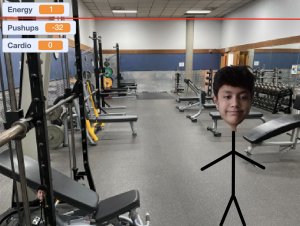Coding for Hope: How Students Can Design Computer Games Powered by Optimism
When students use hope theory as a frame for their work, it can make them more optimistic about the future.
Your content has been saved!
Go to My Saved Content.As we limped toward the finish line of the most difficult school year ever (pandemic and hybrid and Zoom, oh my!), I wondered how I could wrap up the semester in my design lab classes in a positive way.
Then this article from Edutopia about hope theory inspired a project that honored the difficulties of the past year while also sending my students into summer knowing how to work toward their hopes.
But we don’t have to wait for a pandemic to help our students be more hopeful. Focusing on hope and hopeful strategies would be a great way to start the school year in the fall, kick off a new calendar year in January, or support our students through any difficult time.
Hope Across the Curriculum
Hope theory says that hopeful people are happier, healthier, and more successful, and even if we don’t feel hopeful, we can be taught to hope and take steps to make our hopes a reality.
For my design lab students, this took the form of creating a computer game that represented the journey to a hope realized. But your students don’t have to program a game to learn the power of hope. In an English class, they could write a story about how hope propelled someone to reach a major goal. In history class, they could identify a hope they have for their city, country, or world and then create a timeline of steps to bring that hope to fruition. A daily plan for improved physical health could bring hope to a physical education class. There is no wrong time or place to give students tools for hope, especially when they have been through a time that might feel hopeless.
Bringing Hope Theory to My Students
First, I wanted to acknowledge the impact that the past year might have had on us while also teaching students about the power of hope. So we looked back on 2020 with Google’s Year in Search video, and then we learned about hope theory from psychologist and University of Kansas professor Rick Snyder.
To connect hope theory to our design lab curriculum, we learned about Hopelab, a social innovation lab that designs games to help patients make healthier choices. The video game GRIS showed us how a game could help players work through grief, depression, and other emotional challenges. And the Games for Change Festival showed us how games can broaden our understanding of social issues, health, and the environment.
We were in distance learning at the time, so I assigned these videos through Edpuzzle. That way, I could see each student’s progress in real time (and send a private nudge to those who weren’t watching). I inserted questions in Edpuzzle to help students stay focused on the content, and the following class periods we discussed what we had learned from the videos.
Hope + Game Design
Once my students had a better understanding of how games could be used for positive change, it was time to let their own hope inspire a new game. They read this article to learn how to be more hopeful, and then they chose one of their own hopes to represent in their game.
At this point, they were anxious to get started on the actual game design. But first they needed to learn some coding. We used Scratch programming for the following reasons:
- Beginners with no experience can use it.
- Advanced coders can work at their level and create complex programs.
- Tutorials are built into the site.
- Projects can be personalized with students’ photos, drawings, etc.
- Projects can easily be published and shared.
My students got familiar with Scratch by working through tutorials on the Scratch site. Then they brainstormed game ideas and planned how their game would represent their hope journey.
To personalize their games even more, I taught them how to insert their own images to use as backgrounds, as well as how to remove the background of a photo so that they could use a picture of themselves as the sprite (character) in their game. For instance, Ronin (pictured above) wants to become a professional mountain biker, so he used an image of himself on his bike for his game sprite. Caleb’s hope is to get physically stronger, so he used a backdrop of a gym and created a sprite from a photo of his head on a stick figure.

Gaming for Hope
We celebrated our completed games with a day of game testing and feedback. I collected their game links via Google Forms, then shared the links and had students play at least five of their classmates’ games. They answered feedback questions to help each other improve their games and to help me gauge the impact of this project:
This game has definitely affected how I feel about becoming a writer because I have always seen coding as impossible for me, but now knowing that I was capable of doing something that for so long I saw as impossible made me feel like becoming a writer is much more possible than I had once imagined. —J., 13
It feels good seeing my hope turn into reality because during these times I have found it hard to find motivation to pursue my hope of becoming a good soccer player, and thinking of the satisfaction of saying “I did it,” like at the end of the game, really helps. —S., 12
As I picture my students arriving on campus in August, most of them for the first time since March 2020, I can’t imagine a more fitting and, well, hopeful way to start the year than with a little hope.